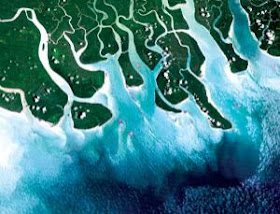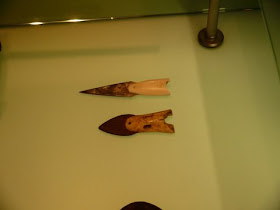
George Comer in the rigging, courtesy Mystic Seaport

Inuit Family, photograph George Comer, courtesy Mystic eaport

Hudson Bay Inuit carving, collected by George Comer, courtesy Canadian Museum of Civilization

Hudson Bay Inuit carving, collected George Comer, courtesy Canadian Museum od Civilization

Netsilik Family, George Comer photograph, courtesy Mystic Seaport

Netsilik Kayak drawing courtesy Canadian Museum of Civilization/Dr. Eugene Arima

Replica and photograph courtesy Harvey Golden
Captain George Comer's life story is as unlikely as it is interesting. Born in Quebec in 1858 to a seafaring father, he emigrated to New England around age five, with his mother. At age seventeen in 1875 he had found his way to New London, where he shipped out as a green hand on the
Nile, a whaling barkentine bound for the Arctic whaling grounds. Though it would be over a decade before he returned to the arctic, the trip was seminal and set the course for the arc of George Comer's life and adventures. After several seasons of sealing from Cape Horn to the Indian Ocean, Comer returned to the Arctic with his original captain, John Spicer, with three annual whaling trips to Hudson Bay in the
Era, a 91 ft. topsail schooner. In '93 he returned (as second mate aboard the
Canton) to winter over in the Hudson Bay for the first time. It was a significant experience which fed a growing interest in the natural world and anthropology. Long winter hours. Inuit camped nearby. He collected.
His life changed in 1897 when the father of American anthropology,
Franz Boas contacted Comer's former captain Spicer for information about the Hudson Bay Inuit. Spicer referred him to Comer, who had taken over as captain of the
Era. It was, as stated by Fred Calabretta in "
Sea History" magazine, Comer's 'defining moment'. Asked to put together a collection of Eskimo artifacts from the Hudson Bay area, Comer impressed Boas immensely. He went on to become a highly regarded figure in North American anthropology under Boas' tuteledge, taking over 300 pictures of Canadian Inuit and recording the first Inuit voices in Canada, telling stories and singing songs. His closest friend among the Inuit was a Shaman, Ippaktuk (shaman) Tasseok, andhe had a longtime female Inuit companion, Nivisinaaq.
In 1916, while icebound in north Greenland, near Qaanaaq, or Thule, Comer discovered a kitchen midden which yeilded the first evidence of a paleo-Eskimo civilization, ancestors of the modern Inuit, which became known as the Thule Culture.
The kayak, or more properly qajaq seen above was collected by Comer in 1913, a year after he had retired from whaling. It's a Netsilik or Natlinglimuit style, and one of the only two qajaq I'm aware of him having collected ( the other was also built in replica by H. Golden, see his Caribou Inuit Kayak
here). There may have well been more. This is a Caribou Eskimo craft, used in lakes and rivers for hunting caribou.
This kayak has struck my imagination and I am planning to build a replica, or near replica of this fine example of Inuit craftsmanship and creativity. It was my interest in this boat that led me to discover and research George Comer. I found valuable and facinating information on Comer from a variety of sources, especially the above mentioned magazine article , but also at the Mystic Seaport, where there is a large exhibit devoted to Comer, see
website, the
Canadian Museum of Civilisation, and the
Dartmouth College Library. The replica was built by
Harvey Golden, to plans found in
"Inuit Kayaks in Canada" by Dr. Eugene Arima. My thanks to all .









































